Where can we take you?
Uganda has ten national parks and twelve wildlife reserves, all under the management of Uganda Wildlife Authority. In addition to the national parks and reserves, there are several other areas of interest. These include: Bigodi Wetlands Sanctuary, Entebbe, Jinja, Kampala, Karamoja, Lake Bunyonyi, Lake Mutanda (both in the Kigezi Highlands), Mabamba Wetlands, Nakasangola, Ndali-Kasenda Crater Lakes and Sipi Falls.

"The primate capital of the world"
Kibale National Park is renowned for being one of East Africa’s premier primate destinations! Home to a total of 70 mammal species, including 13 primate species and is famous for being the stomping ground to the highest concentration of chimpanzees anywhere in East Africa! The park also contains over 375 species of birds making it an alluring bird watching destination, all set to the backdrop of one of the most varied tracts of tropical forest in Uganda. Dense forest cover is interspersed with patches of grassland and swamp, dominating the northern and central parts of the park on an elevated plateau. Kibale Forest also adjoins Queen Elizabeth National Park to the south to create a 180km-long corridor for wildlife between Ishasha, the remote southern sector of Queen Elizabeth National Park, and Sebitoli in the north of Kibale National Park.
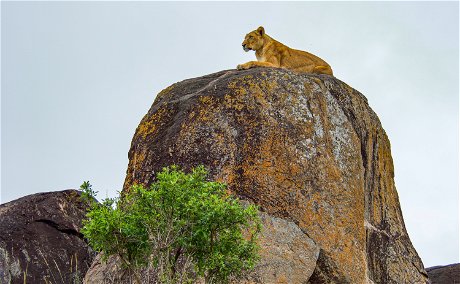
"True African wilderness"
Kidepo Valley National Park is Uganda’s most isolated national park and ranks among Africa’s finest wildernesses! The few who make the long journey north through the wild frontier region of Karamoja or via Gulu would agree that it is also one of Uganda’s most magnificent parks. From Apoka, in the heart of the park a savannah landscape extends far beyond the gazetted area, towards horizons ringed by mountain ranges. During the dry season, the only permanent water in the park is found in wetlands and remnant pools in the broad Narus Valley. These seasonal oases combined with the open savannah terrain, make the Narus Valley the park’s prime game viewing location. Due to the park's accessibility it’s advised to visit Kidepo and Karamoja in the drier months, which are September to March.

"The mystical challenge"
The immense Rwenzori mountain range sometimes known as the ‘Mountains of the Moon’ is Uganda’s most alluring hiking destination and for good reason! The mountain range runs along the Uganda / Congolese border rising from the north of Lake Edward and south of Lake Albert. Offering one-to-nine day hiking trips, which pass through several different attitudinally-defined vegetation zones. The upper-regions of the Rwenzori Mountains, ranging between 4000m and 5109m, is regarded a much tougher hiking conditions than that of Mount Kilimanjaro or Kenya and requires above average fitness and stamina. The national park hosts some of the world's rarest vegetation as well as 70 mammals and 217 bird species including 19 Albertine Rift endemics.

"The world's largest mountain caldera"
Mount Elgon is an extinct shield volcano straddling the Uganda / Kenyan border, it is Africa’s eighth highest massif and rises to 4321m at Wagagai Peak. The higher slopes are protected by national parks in Uganda and Kenya, creating an extensive transboundary conservation area, which has been declared a UNESCO & Biosphere Reserve. Trekking on Mt. Elgon’s deserted moorlands unveils a magnificent and pristine wilderness with the ultimate goal at reaching the top of Mt. Elgon and descending into the vast 40km² caldera. The mountain is also a birders paradise with 300 species of birds, including the endangered Lammergeyer found here. Small antelopes, forest monkeys, forest-elephants and buffalos also live here which you may be able to spot as you trek across these impressive volcano slopes!
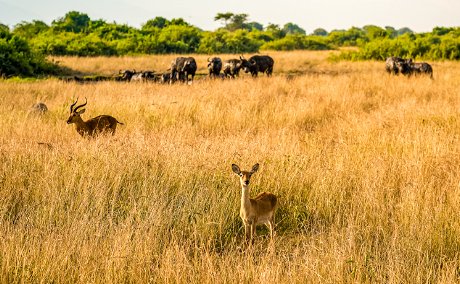
"A medley of wonders"
There is no doubt why Queen Elizabeth National Park is Uganda’s most popular tourist destination. It boasts a diverse range of ecosystems including vast savannah plains, tropical forest, glassy lakes and dense green wetland. Within its boundaries live large herds of elephant, prides of tree-climbing lions and other classic big wildlife species. It also contains over 600 species of bird and 10 species of primate including chimpanzees. The park itself has a backdrop of the mighty Rwenzori mountains and the far north of the park is made up of dramatic craters scattered between rolling hills. The Kazinga channel offers panoramic views where you can see much of the highly anticipated wildlife such as hippos, crocodiles, buffalo and many species of birds. On top of all this Queen Elizabeth has a captivating cultural history for you to experience as well.
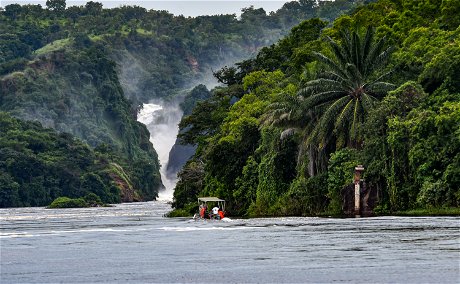
"The world's most powerful waterfall"
Murchison Falls National Park lies at the northern end of the Albertine Rift Valley, where the sweeping Bunyoro escarpment tumbles into vast, borassus palm-dotted savannah. First gazetted as a game reserve in 1926, it is Uganda's largest and oldest conservation area, hosting 76 species of mammals and 451 birds. The park is bisected by the Victoria Nile, which plunges 45m over the remnant rift valley wall, creating the dramatic Murchison Falls, the centrepiece of the park and the final event in an 80km stretch of rapids. The mighty cascade drains the last of the river's energy, transforming it into a broad, placid stream that flows quietly across the rift valley floor into Lake Albert. This stretch of river provides one of Uganda's most remarkable wildlife spectacles. Regular visitors to the riverbanks include elephants, giraffes and buffaloes; while hippos, Nile crocodiles and aquatic birds are permanent residents.
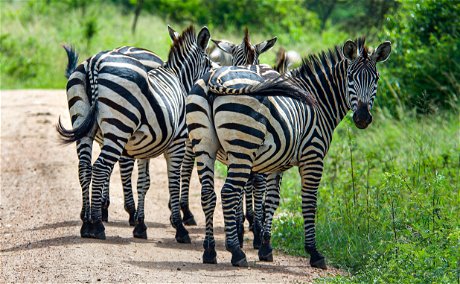
"Whispers of the wild"
Lake Mburo National Park’s rolling hills, acacia woodland and expansive wetland system offer a stunning backdrop to view the park's large game herds including impala, zebra, eland and buffalo. This park is also home to a small breeding group of Rothschild's giraffes, introduced from Murchison Falls National Park in 2015. With zebras and giraffes absent from Queen Elizabeth National Park, but lions and elephant herds absent from Lake Mburo National Park combining a visit to both parks will certainly compliment your safari adventure! Lake Mburo National Park also offers plenty of additional activities to game drives, such as walking safaris, mountain biking, and horseback riding on the savannah plains, as well as a nocturnal game drives to seek out the elusive leopards! Despite being Uganda’s smallest park, it is a compact gem that is conveniently located close to a highway that connects Kampala to Uganda’s western region, the perfect stop off point on your journey through the west of Uganda!
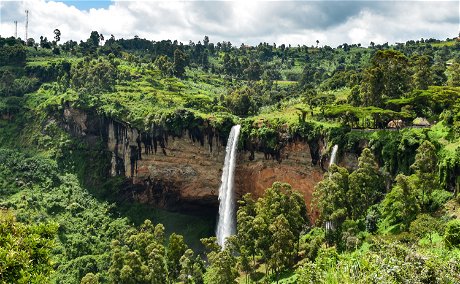
"Coffee and cascading waterfalls"
Sipi Falls is a set of three waterfalls that cascade down the mountain side of Mount Elgon, an extinct shield volcano, the third and largest waterfall dropping 100m into a pool below. The Sipi River is named after the ‘Sep’ which is a plant that resembles a wild banana and can be found along the riverbanks. The area around Sipi Falls is also known for it’s high quality Arabica coffee which grows between 1,600 and 1,900 metres altitude. You can explore Sipi Falls to the backdrop of stunning views of the savannah plains to the west with numerous activities to really experience the beauty of the area. From abseiling down the side of the might Sipi Falls, to exploring the farms to get an insight into the local community with coffee sampling or hiking up this stunning set of waterfalls.

"Where gold meets silver"
Sitting high in the clouds is Mgahinga Gorilla National Park. This stunning park consists of three conical, extinct volcanoes that can be hiked which are part of the spectacular Virunga range that lies along the border region of DRC and Rwanda. The volcanoes’ slopes contain various ecosystems and are biologically diverse, and their peaks provide a striking backdrop to this gorgeous scenery. As its name suggests, it was created to protect the rare mountain gorillas that inhabit the dense rainforest slopes, it is also an important habitat for the forest buffalo and endemic golden monkey. As well as being important for wildlife, the park also has a huge cultural significance, in particular for the indigenous Batwa pygmies. This tribe of hunter-gatherers was the forest’s first people, and their ancient knowledge of its secrets remains unrivalled!
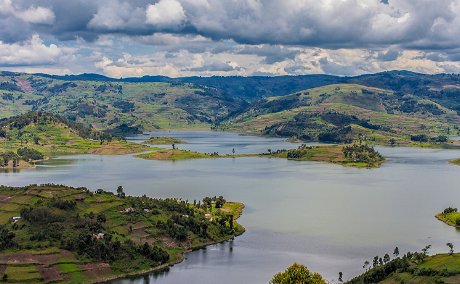
“Place of many little birds”
Lake Bunyonyi or ‘place of many little birds’ is an idyllic highland lake, with its many inlets, dotted with islands and bordered by steep terraced farmland it’s one of Uganda’s most stunning vistas. The lake lies at 1962 meters above sea level in the Kigezi Highlands of south-western Uganda, an area also known as the ‘Switzerland of Africa’. Certain sections of the lake are exceedingly deep, with a maximum depth of 900 meters, making it the third deepest lake in the world. Lake Bunyonyi is also known for its local delicacy of small crayfish and is featured on many of the menus at the lakeside lodges for you to sample. Explore the lake with a mixture of trips by speed boat or if you’d prefer a more leisurely pace a traditional dugout canoe. There are a range of hiking and canoeing trips available including half day trip, full day or overnight trips of lakeshore camping allowing you to immerse yourself in the landscape and meet many of the residents living around the lake. We also highly recommend that you drive or hike to the top of the hills to watch the sun rise or set and enjoy a postcard view over inlets of Lake Bunyonyi, many of the lakes 29 islands and in the distance and the conical peak of Mount Muhavura, part of the Virunga Volcano chain on the Uganda - Rwanda border.
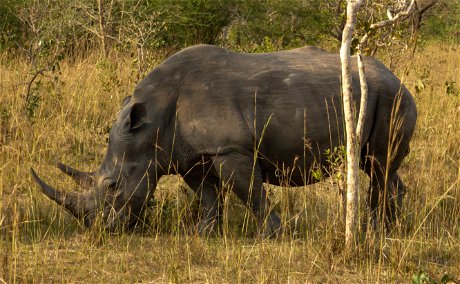
"A walk on the wild side"
Nakasongola district lies in the heart of Uganda with the main commercial centre, Nakasongola town located 125km north of Kampala and 200km south of Gulu along the Kampala - Gulu highway making it a popular stop off point on the north - south route and to Murchison Falls National Park. As you drive you view a landscape that is predominately low ululating hills, wide grassy plains and large farmsteads punctuated by large rocky hills dotted in the landscape. For those travellers interested in birding it’s worth a stop off at Kakooge Swamp, with the chance to spot the Purple-banded Sunbird, Western-banded Snake-eagle and Fan-tailed widowbird. The most popular activity though is a visit to Ziwa Rhino Sanctuary where you can also take a canoe tour on Lugogo Swamp, another birders paradise with a good chance to spot the Shoebill. The sanctuary is also home to Uganda’s only population of rhino, with the hopes of one day releasing them back into Murchison Falls National Park. Tracking these rhinos of foot no only give you an intermit viewing of these fantastic animals but also supports their reintroduction efforts.

“That it is of the impala”
Immerse yourself in the bustling streets of Kampala, Uganda’s capital city. Spread across many hills you’ll be stuck by how green the city is with large numbers of trees dotted over the hillsides. The name Kampala originates from the Luganda words meaning “that it is of the impala” in reference to the large herds of impala once found on these hills, which once formed a protected game reserve designated by the Kabaka (King) of Buganda. The city has been ranked as the capital with the highest quality of life in East Africa and is one of the world's top 15 cities in rate of expansion, with the population standing at 1.5 million people with an additional 2 million people living in the surrounding Wakiso district. Experience the city by browsing through craft markets offering a wide range of African arts and crafts, the perfect place to pick up a souvenir, sampling popular street food such as the ‘Rolex’ which consists of chapati and omelet or ‘Nsenene’ which is freshly caught seasonal grasshopper which are then fried into a tasty snack. You can take a walking tour of the city to landmarks such as the Uganda National Mosque , Independence monument, the chaotic old taxi park, Kabaka’s and palace of the Kabaka of Buganda. We can also take you on a dark tour that uncovers some intriguing and imposing spaces in the city and beyond.
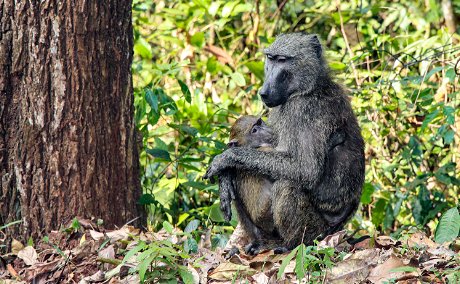
"Where tropical meets savannah"
The dense tropical rainforest of Budongo Forest lies on the southern boundary of Murchison Falls National Park, with the connecting Kaniyo Pabidi Forest located in the south of the national park. This is one of the largest natural rainforests still surviving in Uganda, which covers 825 square km in total. This is thanks to its protection as a royal hunting forest by the King of Bunyoro, until it was gazetted as a reserve in 1932 from when the National Forest Authority continued its protection. The rainforest is a well known destination for chimpanzee tracking, which takes place in Kaniyo Pabidi Forest. There’s also the option to take part in the chimpanzee habituation experience, where you spend a full day tracking a group of un habituated chimps and contribute towards the habituation process. The Royal Mile is also considered to be one of the best rainforest birding sites anywhere in Uganda and can be found in Budongo Forest. This 2.5km stretch of dirt road runs through the forest offering you the chance to spot the Puvel’s illadopsis which is found nowhere else in East Africa, the Ituri batis, chestnut-capped flycatcher, and brown crowned eremomela to name a few. The forest also has a network of well maintained paths allowing access for nature walks to spot some of the 280 butterflies varieties, 9 species of mammals and 465 species of plants, including the Mahogany trees which can grow up to 80 meters in height.
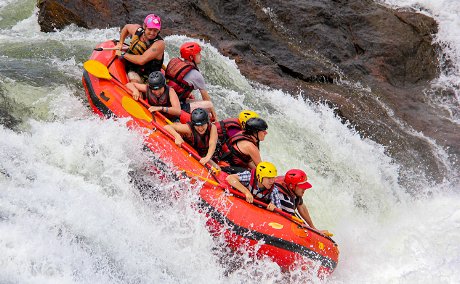
"The adventure capital of East Africa”
Jinja town, also known as the "the adventure capital of East Africa”, is nestled between the shores of Lake Victoria and the source of the river Nile. Founded as an administrative centre in 1901, with the completion of the Owen Falls Dam over Ripon Falls in 1954 created a catalyst for it to become Uganda’s second most important economic area. The town is also home to Nile Breweries, a local beer brewed on the banks over the river Nile. Lining the river are numerous idyllic lodges, taking in fantastic panoramic vistas of the river Nile. Explore the town with guided historical walks or on a mountain bike to learn more about the area's history, cruise along the lakeshore on a boat cruise to enjoy the views at a slower pace or discover the banks of the river Nile on a horseback safari. For the thrill seekers there’s also the chance to experience some of the worlds finest white water rapids either by rafting or kayaking! To the west of Jinja on the western banks of the river Nile is Mabira Forest. This is the largest tract of tropical rainforest remaining in central Uganda at 300km2, which has been a protected forest reserve since 1932. The rainforest is home to a large number of primate species, including the endangered Uganda mangabey, alongside the 315 bird species recorded here including Nahan’s francolin, tit hylia, and Shining-blue kingfisher. This is the perfect stop off point to explore the rainforest when travelling between Kampala and Jinja, with guided birding walks and forest nature walks on offer, as well as the chance to explore the tree canopy along a network of zip lines.

“The world’s largest freshwater lake”
Located on a peninsular stretching out into Lake Victoria, the world’s largest freshwater lake is Entebbe town. Also home to Uganda’s only international airport this is the first taste of Uganda most visitors experience on arrival, as well as being the hub for domestic flights to Uganda’s national parks. A few kilometres away is Kajjansi airfield from where flights can be chartered if you are looking for something extra special. If you wish to cross the waters of Lake Victoria to reach the tropical beaches of Ssese Islands, Entebbe Is also home to the docks from where a daily ferry service departs. The word ‘Entebbe’ in the Luganda means ‘seat’, most likely because this was the place where the Baganda chief would adjudicate legal cases, it was then the seat of governance until Uganda achieved independence in 1962. To this day is also still the location of State House, the official residence of the president of Uganda, which you’ll pass in the heart of the town. There’s a wide variety of activities for you to add to a half or full day stop over on your arrival and departure from the airport. You can take a stroll in Entebbe Botanical Gardens, a boat trip to Ngamba Island Chimpanzee Sanctuary, bird watch in Lutembe Bay or explore the lake with a fishing trip or unwind at the end of the day on a sunset cruise. The town also offers a variety of comfortable hotels, set in the town's leafy suburbs.
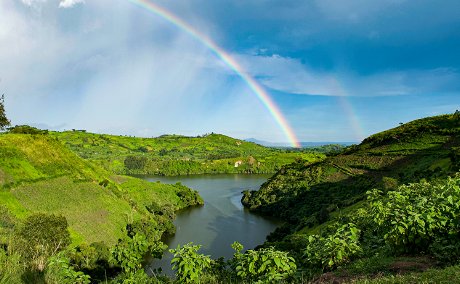
“A landscape dotted with crater-lake pools”
A landscape dotted with crater-lake pools, undulating hills covered in small farmsteads and the Rwenzori Mountains or ‘Mountains of the Moon’ running along the skyline. The Ndali-Kasenda crater lakes offer one of the most stunning settings for you to explore anywhere in Uganda. There are over three dozen permanent crater lakes in the area, split into several clusters around Fort Portal town in the west of Uganda. You can explore the area with guided walks or drives to view several of the lakes and local villages, visit a local vanilla farmer to learn more about his trade or ramble through on the many vast tea plantations covering the rolling hills. The area is conveniently close to the border of the rainforest of Kibale National Park, so can be used as a base from where to explore the rainforest with chimpanzee tracking, nature walks, birding walks or spend a full day in the rainforest tracking an un-habituated chimp family on the chimpanzee habituation experience!

“A ramble along the boardwalk”
Adjoining the rainforest of Kibale National Park is Bigodi Wetlands Sanctuary, part of the larger Magombe wetlands system. This protected 8km long area acts as a wildlife corridor for wildlife to move between the northern and southern sections of Kibale National Park. The swamp is tranquil place for nature and birding walks, with the wetlands being home to 138 birding species including the Great blue turaco, Brown illadopsis and Papyrus gonolek to be spotted. A ramble along the boardwalks following the swamp edge also offer you fantastic primate spotting with seven monkey species living here including the red colobus, grey-cheeked mangabey, L’Hoest, vervet, black and white colobus, blue monkeys and baboons. The guided walks support the local village of Bigodi through KAFRED, an award winning community project which provides employment for the local villagers and the proceeds from guided walks support the local school.

“An Instagram panorama”
Nestled in the foothills of the Virunga volcano chain is Uganda’s idyllic Lake Mutanda. The lake lies at an altitude of 1800m and is renowned for its stunning panorama of the Virunga Volcano massif running along the skyline, which includes Mount Muhavura, Mount Sabyinyo and Mount Gahinga. Lake Mutanda and twin Lake Mulehe are located between both Mgahinga Gorilla National Park and the southern edge of Bwindi Impenetrable National Park, allowing you to base yourself here while tracking the mountain gorillas. If you wish to participate in the ultimate gorilla meeting with the gorilla habituation exercise, this takes place at Rushaga, Bwindi Impenetrable National Park and is a short drive away. It’s also possible to track the endemic golden monkeys on the volcano slopes, hike to the volcano peaks and meet the Batwa tribe in nearby Mgahinga Gorilla National Park. Of course there are plenty of ways to enjoy the lake surrounding such as community walks to meet the local residents, canoe trips, swimming and sunset cruises where you can watch the sunset light up the volcanoes from the lake's tranquil waters.

“That giant prehistoric-looking bird”
Set on the shores of Lake Victoria is Mabamba Wetlands part of a 100km2 wetlands system, protected as a RAMSAR site in 2006 and is a site of international importance for its high diversity of bird species. Located off the Kampala - Masaka highway the swamp is easily accessed from Kampala and a popular stop off point when travelling onto Lake Mburo National Park. The swamps most famous resident is of course the prehistoric looking Shoebill, which is best spotted early in the morning. As you glide through the water you will be struck by the lush green vegetation, dotted with bright purple water lilies and feathered papyrus flowers swaying over your head as you seek out these giant birds. With over 300 bird species recorded here you will also be able to spot other birdlife such as the Lesser jacana, Papyrus gonolek and the Saddle-billed stork! Also just off the main Kampala - Masaka is Mpanga Forest, an unmissable birding hot spot and popular break for any journey. The protected 45km2 rainforest reserve was first gazetted in the 1950’s and to this day protects the habitat of some 180 bird species including the African grey parrot, Black and white casqued hornbill and the great blue turaco which can be spotted by taking nature walks along the forests guided network of paths. You’re also likely to spot the red-tailed monkey which is common to the area as well as an abundant number of butterflies. Just 1km from the forest edge you can also visit Mpambire village which is home to the Buganda drum makers, an interesting stop to pick yourself up a souvenir, and watch the craftsmen at work.

“The Unexplored East”
The stunning wilderness landscape of Karamoja in eastern Uganda offers a truly off-the-beaten-track experience. This region contrasts significantly with the rest of Uganda, with it’s more arid mountainous landscape and cultural affinity to Eastern Africa. You can experience authentic cultural experiences in the region from viewing the rock art with a Karamojong tribal elder, visit a traditional Manyatta to experience village life to camping overnight in a traditional kraal to gain insight into a traditional pastoral way of life. This stunning landscape can also be explored with a range of mountain biking trips or mountain hiking treks on Mount Moroto, Mount Napak and Mount Kadam. The region also offers some excellent wildlife viewing from where you can visit one of Africa’s finest wildernesses, Kidepo Valley National Park. Nestled in the remote north western corner of Uganda, here you can hike to meet the isolated Ik tribe on Mount Morungole and explore the savannah with game drives or walking safaris and spot species rarely seen elsewhere in Uganda such as the ostrich. The region is also home to the relatively unvisited Pian Upe Wildlife Reserve, where you have the best chances to spot the elusive cheetah as well a wide variety of birdlife including the Secretary bird and African hornbill. Uganda’s only endemic bird species, the Fox’s weaver can also be found in eastern Uganda at Matheniko Wildlife Reserve. A trip through the east of Uganda is often complemented with a safari in Murchison Falls National Park and Jinja town, East Africa’s adventure capital where you can raft or kayak on the white waters of the river Nile.
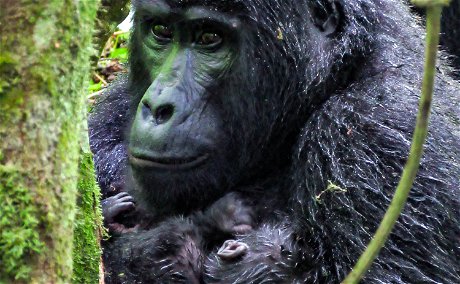
"The ultimate gorilla experience"
Bwindi Impenetrable National Park is home to the iconic rare mountain gorillas and with more than a thousand flowering plant species, protects the richest floral diversity of any forest in East Africa. This ancient rainforest has blanketed the edge of the western arm of the Great Rift Valley for some 25,000 years, giving rise to a diverse population of wildlife including 120 mammal species, 350 species of birds, 310 species of butterfly and 51 reptile species. In recognition of its biodiversity the park was listed as a UNESCO World Heritage Site in 1994. Around half of the world's mountain gorillas roam the impenetrable forest, 14 groups of which have been habituated for tourism purposes and can be tracked on a daily basis. Additionally one more group is monitored for research purposes and can be tracked by tourists on the gorilla habituation exercise, for a more intimate experience. These gorilla groups are tracked from 4 locations; Buhoma and Ruhija trailheads on the northern side of the park, served by flights to Kihihi airstrip and close by to Ishasha Plains, Queen Elizabeth National Park. Then on the southern side of the park with views towards the Virunga Volcanoes and close by to Lake Mutanda are the Rushaga and Nkuringo trailheads, which are served by Kisoro airstrip. The park is also known for its nature walks along a well maintained set of trails, longer hiking route such as between Buhoma and Nkuringo and community visits including meeting the Batwa who once lived in the rainforest. The park is also a renowned birding destination, with 23 Albertine rift endemics recorded here such as the Blue-headed Sunbird, African green broadbill and Short-tailed warble. With popular sites to explore such as ‘The Neck’, Buhoma Waterfall Trail and Mubwindi Wetlands, drawing enthusiastic birders from across the world!


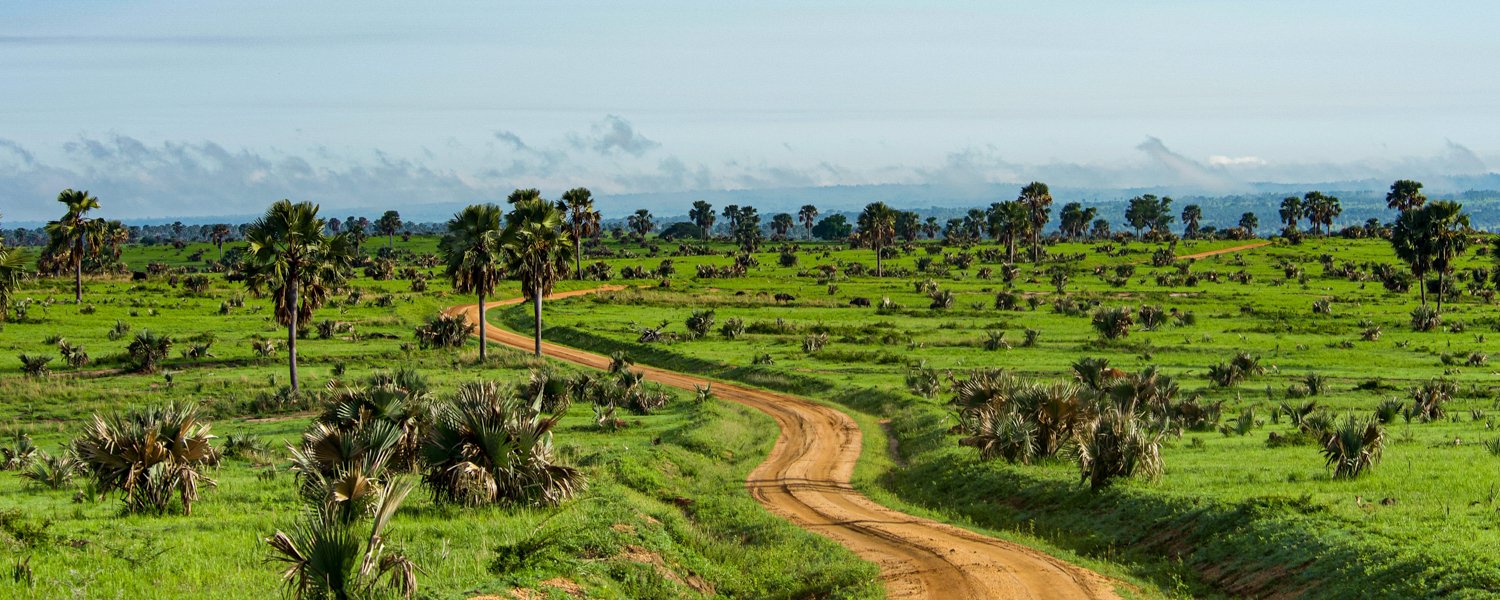
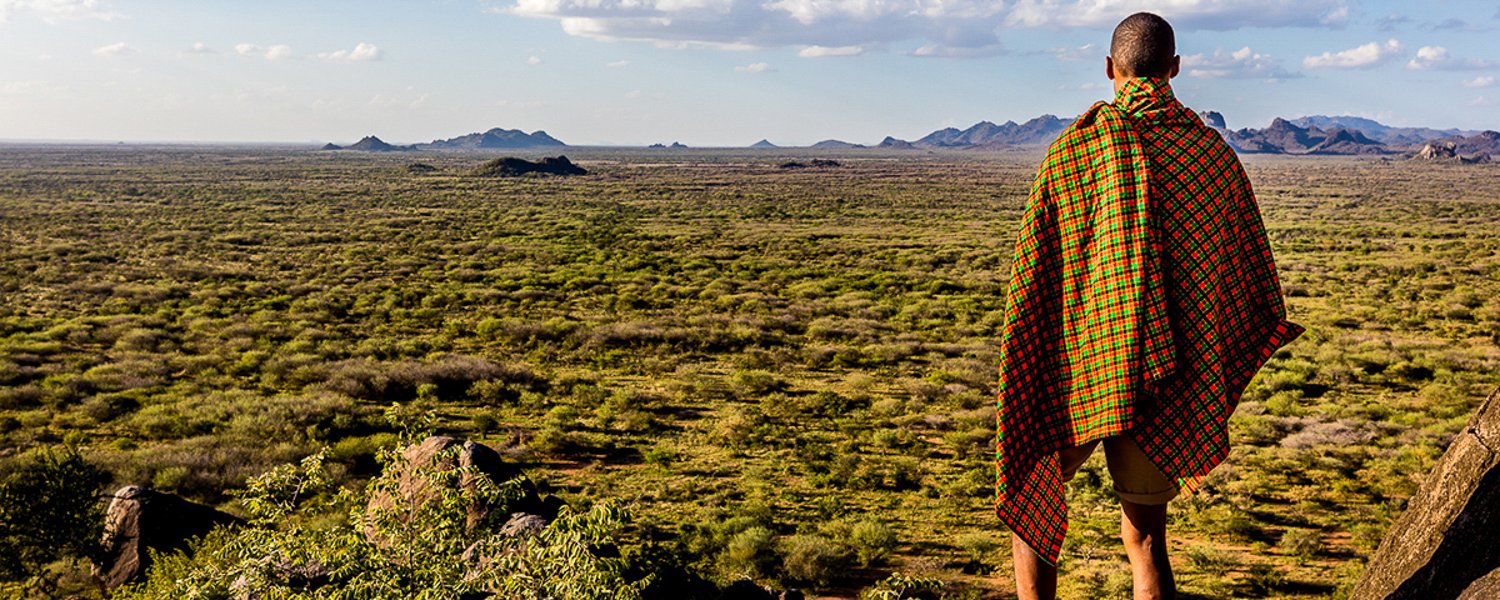
Share This Page